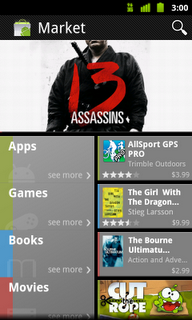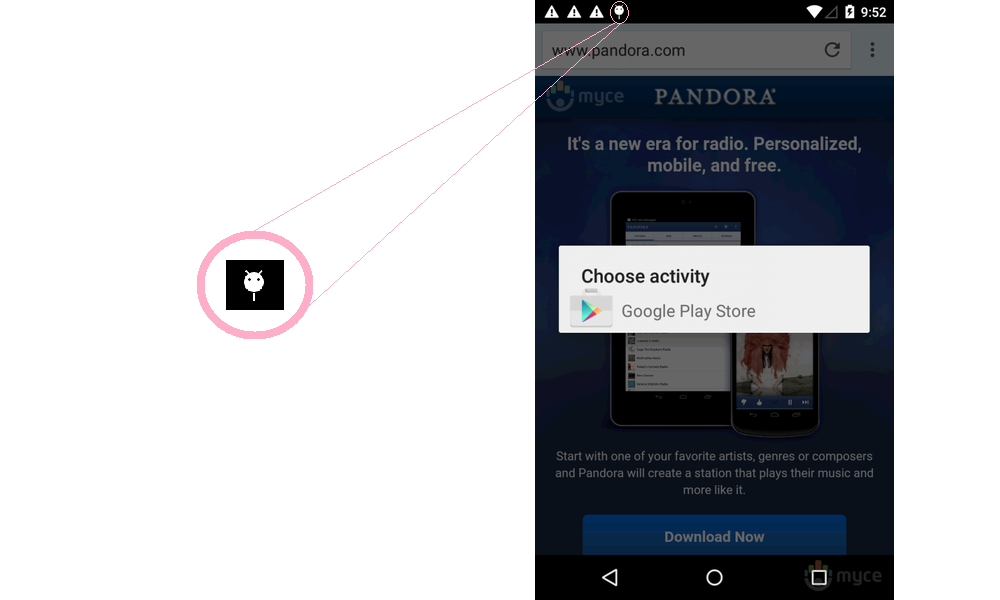
Generally we don’t lump multiple reviews into one review, but since the Lenovo Yoga 8 and Yoga 10 Android tablets have identical specs, minus screensize and minor battery change, we felt there was no reason to make them individual reviews. Lets get to work and see how these two newly release tablets work out.
The Specs
The Lenovo Yoga 8 and Yoga 10 are mildly priced to compete in the mid-ranged tablet arena. Both tablets pack in a MediaTek MTK 8125 Quad-core ARM Cortex-A7 (1.20GHz 533MHz 1MB) processor. They have just 1 GB of LPDDR2 800 MHz RAM, a 1.6MP front facing camera and a 5MP rear facing camera. Both come out of the box with Android 4.2  and come in a 16GB or 32GB variety. We have one of each of the 16GB models on hand for this review. A nice addition that some of the more powerful tablets out there don’t have that these do is a conveniently located micro SD card slot. Which actually supports up to a 64GB card.


The primary difference between the two tablets when it comes to specs is the screen size. The Yoga 8 offers up a 8-inch screen with a resolution of 1280 x 800. The Yoga 10 is obviously a 10.1-inch display and is also at a resolution of 1280 x 800.  As you might have guessed, the resolution looks a lot cleaner and crisper on the Yoga 8 then on the Yoga 10. As for battery size differences, the Yoga 8 houses a 6,000 mAh battery and the Yoga 10 offers a 9,000 mAh battery. Both claim long battery life.
Functionality and Design
The functionality and design of both tablets are again, identical, but also compelling enough to catch your eye and make you wonder. Unlike most standard flat tablets, the Yoga’s cylindrical battery that is placed on one side gives you something nice and easy to pick up and hold onto while you walk. It serves the secondary purpose of displacing the weight of the tablet into your hand, or while in stand mode, keeping it balanced on the table. Â I was pretty curious how the rear stand was designed and worked when I first saw the images of these tablets.


As you can see the stand is on the rear of the tablet. If you have big fingers an no nails you might have some issues getting in under the flap to open it. There is a small, crevice if you will, where you can stick your finger nails to pull the stand down. It is also very easy and possible to man handle the stand and just grab it with your thumb on the front and your fingers on the back and rotate it open. The hinge is pretty stiff and clicks into place when it is fully open providing you a solid feel to place it standing upright. While it is definitely designed to stand in the full vertical clicked position, you do have some leeway for more angles. The additional viewing angles greatly depend on which tablet you have though. The 8-inch can handle more extreme angles on flat surfaces, whereas the 10-inch variety can not.


 Â
 
As one would imagine, the 10-inch is taller so its center of gravity makes it more liable to topple if you attempt to go more extreme than about 10 or 15 degrees. That doesn’t mean it isn’t possible, just not recommended if it will be sitting somewhere that it can be bumped. The 8-inch can easily get more into the 20+ degree angle differences without tipping over. Of course you don’t need to adjust it much when you can also flip it over and lay it down as well.
On the front of the tablets you have a set of Dolby certified speakers. They do sound pretty good, but don’t pump out nearly as much sound as I was expecting. If you are thinking that you could set this up in a large office for music or to watch a movie, it just won’t work out for you. However, in a fairly quiet location with only yourself or a few people, you could easily all watch and hear a movie.

On the left hand side you find the power button. It is on the end of the cylinder battery. It has an LED light behind it that blinks a soft white when you have emails and notifications. Just above that is the micro USB charging port.


On the right hand side you find your headphone jack and your volume rocker. A rather cool, and interesting, aspect of the volume rocker is that their purpose changes with the orientation of the tablet. up is always volume up and down is alway volume down no matter which way the tablet is orientated. Meaning they change based on how the tablet is sitting.


Home Screen

I don’t put a lot of stock in manufacturer branded homescreen layouts or operations. Lenovo didn’t go to a major extreme with their home layout like some do, it is pretty basic and straightforward. However, many Android enthusiasts will be rather irritated and disappointed that they went with a more Apple/iPad approach with an Android mix. If you look, you will see a dock for apps, but what you won’t see is a app drawer. Instead all apps install and go to the next home screen page. Pretty annoying if you ask me. I won’t bore you much with the particulars of a home screen and how Lenovo set this up. We all know that a simple install of Nova or APEX changes the whole tablet and brings it back to something we all know and love.
The Screens
The screen resolution comes up nearly as much as the physical hardware specs do.  As previously mentioned, both tablets have a resolution of 1280 x 800. Unless you have another device the same size with a higher resolution sitting next to you, you might not even really notice it much. Having both the 8 and 10 sitting here, it is very apparent that the 8-inch looks clearer and is dramatically brighter than its 10-inch brother. The screen, the icons and apps are much cleaner looking and less clouded. They just look fuzzy and a bit out of focus on the 10-inch. More so taking the same size icon and stretching it to a larger size.
Screen talk also pulls in the thoughts of movies and games. Since the obvious advantage to both tablets is the kickstand, which makes watching movies pretty much a given. Numerous other reviews I have read about these tablets shoots them into the hole when it comes to pixelation, movie viewing and games. While many of them all have a valid point, I think there are some critical things to think about before degrading these. For instance, what are you trying to watch and how are you trying to watch it. A simple 720p AVI movie file didn’t seem to be well liked by either tablet, which could have been the format or the audio codec or what have you. Both had issues playing it smoothly. However, streaming the same file through Plex or SpotBros gave me a clear image that was very much watchable.
If you get really close, you can see pixelation, but seriously, this isn’t being marketed as a 4K resolution tablet. It is a $250 midrange device. Pixelation in and around that price range is a given. On a similar note, I don’t load an SD card with 720p or 1080p movies to begin with. I load them up with standard quality so that more fits on the card, or in the device memory. If Netflix is your thing, yes, you will see some blacks that are off and things won’t be crystal clear. Attempting to compare the screen resolution to a tablet that costs double, seems a bit far fetched to me. For me, and probably for many of you out there looking towards one of these, your primary concern is if it works. It does.
The Cameras
Both tablets have the same cameras built in. The one on the front is a 1.6MP camera and the one on the rear is a 5MP camera. Their placement is a bit odd, considering how the tablets sit and stand.
Performance
This is where some of us were worried. Especially since Lenovo went with the MediaTek processor and coupled it with only 1GB of RAM. To see how well it would hold up I did a few things that I figured would put it to the test fairly well. No, it wasn’t a benchmark test. Instead I installed some high-end graphic intense games. Dead Trigger 2 and Modern Combat 4 to be exact.




Both tablets handled the games without hesitation and both games looked great on both tablets. Obviously they looked a little better on the 8-inch screen. Individual experience may vary however. I ran Dead Trigger 2 numerous times without failure. I played through some zombie killing action both in hand and with a Moga Pro Power series controller. There were a few moments where turning and shooting stuttered for less than a second, but it wasn’t like it killed me. Near as I could tell, I had too many apps floating around and opened and notifications popping up at the same time. I closed off what was still showing up and didn’t have issues. Just like nearly every device out there, if you have a ton of apps and services running, you might have glitches and slowness in a game or another app.
In normal use cases where I used it for emails, Hangout conversations, watching movies, playing basic games and reading books/magazines, both tablets performed equally impressive. If there was any lag, it wasn’t enough or consistent enough to make me notice it or irritate me. Neither tablet is designed or created for HD content or extreme gaming. Those types of tablets will set you back double what one of these will.
Overall
The overall success to both the Yoga 8 and Yoga 10 is the built-in functionality of the stand, their unique and unconventional design mixed with a long lasting battery.

My personal hands on experience over the last couple of weeks has been nothing short of impressive from a user standpoint. Do I recommend picking up one of these? Sure. For the price they are great tablets with plenty of power for most of what you can throw at it. They would make excellent tablets for kids to play games, watch movies and interact on social channels. With the battery life ranging up to 18 hours of continuous usage, you won’t have to worry about it being dead halfway through a day, or halfway to grandmas house. As you can see in the image above on the 8 inch version, that’s about 12 hours of streaming Google Music with the screen off and a ton of time just sitting idle on my desk. I would personally recommend the Yoga 8 over the 10 simply because of the lack of resolution that the 10 produces. However, if you need a larger screen for reading and various tasks where a higher resolution isn’t important, it will work out just fine.







 Â
 
























